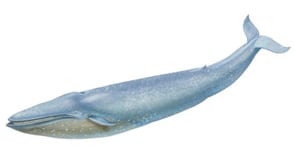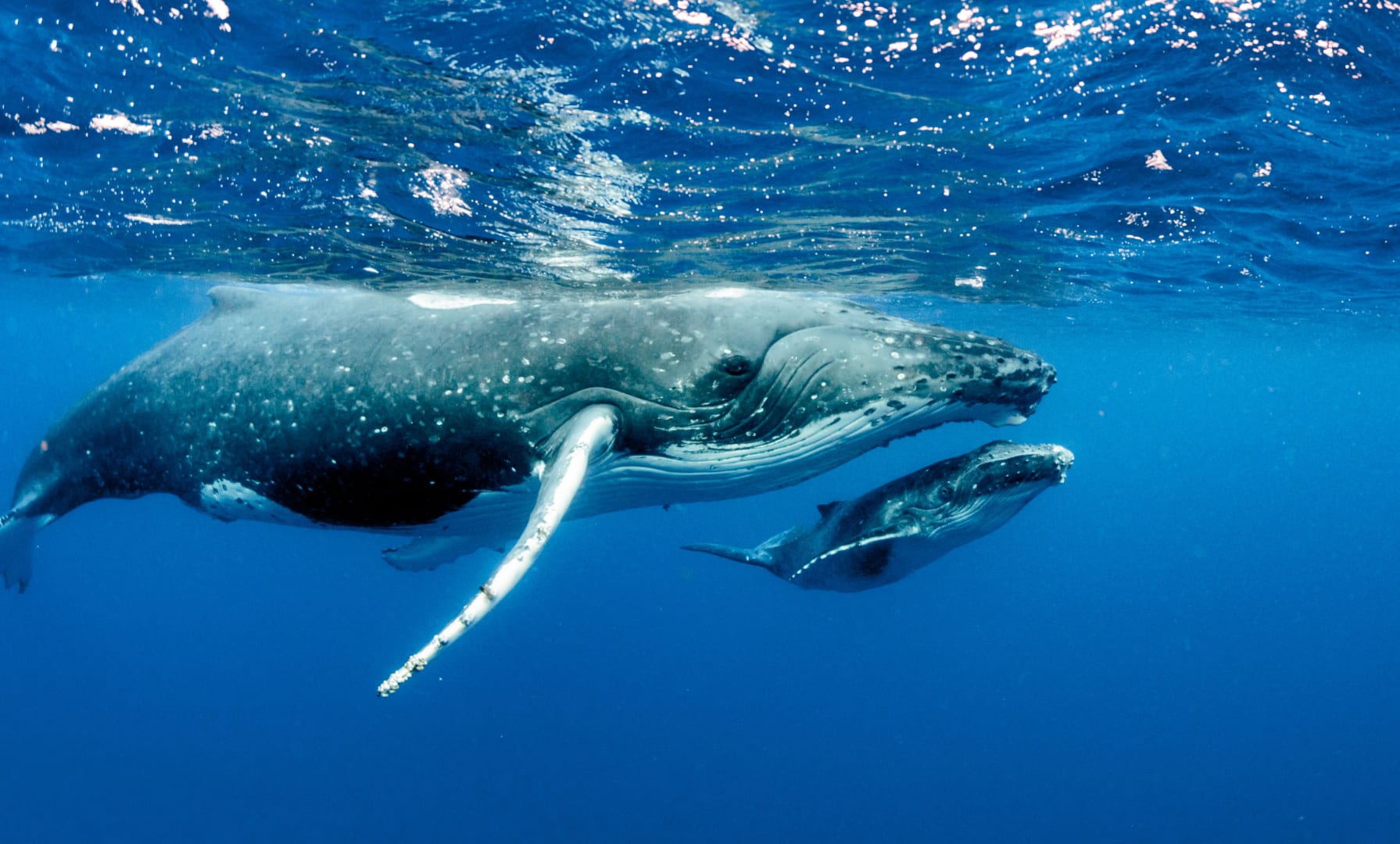Blue Whale

Fact Sheet
Common Name: Blue Whale
Scientific Name: Balaenoptera musculus
Length as an adult: Southern Hemisphere reaches lengths of 90 – 100 feet (27 – 30 meters). Northern Hemisphere average is 75 – 80 feet (23 – 24.5 meters).
Weight as an adult: A male adult weights an average of 100 – 12o tons (90718.5 – 108,862 kg). A female weighs as much as 150 tons (136,000 kg).
Length and weight as birth: The calf length is about 19 -24 feet (6 – 7.8 m) and weighs is 2.5 – 4 tons (2,267 – 3,628 kg).
Time spent nursing: 6 months.
Length of pregnancy: Females typically give birth once every two to three years at the start of the winter after a gestation period of twelve months.
Range: The Blue Whale is found in every ocean except the Arctic.
Likelihood of being seen on a whale watch in Massachusetts coastal waters: Very unlikely.
Preferred food: Feed almost exclusively on small, shrimp-like creatures called krill. During the summer feeding season the blue whale eats as much as it possibly can, consuming an astounding 4 tons (3629 kilograms) or more each day. This means it may eat up to 40 million krill a day.
Unusual characteristics: The Blue Whale is the largest animal inhabiting the earth. Its heart is actually around the size of a Volkswagen Beetle. The blue whale produces louder calls than any other animal.
Appearance: The Blue Whale has a long tapered and streamlined body. The rostrum (upper part of the head) is very broad and flat, almost U-shaped, with a single ridge that extends just forward of the blowhole to the tip of the snout.
General Information: These whales are overall blue- gray color. Their dorsal fins are extremely small, and their pectoral flippers are long and thin. Blue whales can reach speeds of 35km per hour.
Unusual habits: Their throats can expand wide enough to hold 256,000 glasses worth of water. As big as they are, they are still able to breach above the water surface.
Population status: Endangered. The Antarctic sub-species is listed as critically endangered. A rough estimate of global population is 10,000 – 20,000.
Threats: Ship strike and entanglement.
References:
- Society for Marine Mammalogy www.marinemammalscience.org
- American Cetacean Society www.acsonline.org
- Carwardine, Mark. Whales, Dolphins, and Porpoises. London: Dorling Kindersley, 1995. Print.
Prepared by: Cinthia Sanchez


